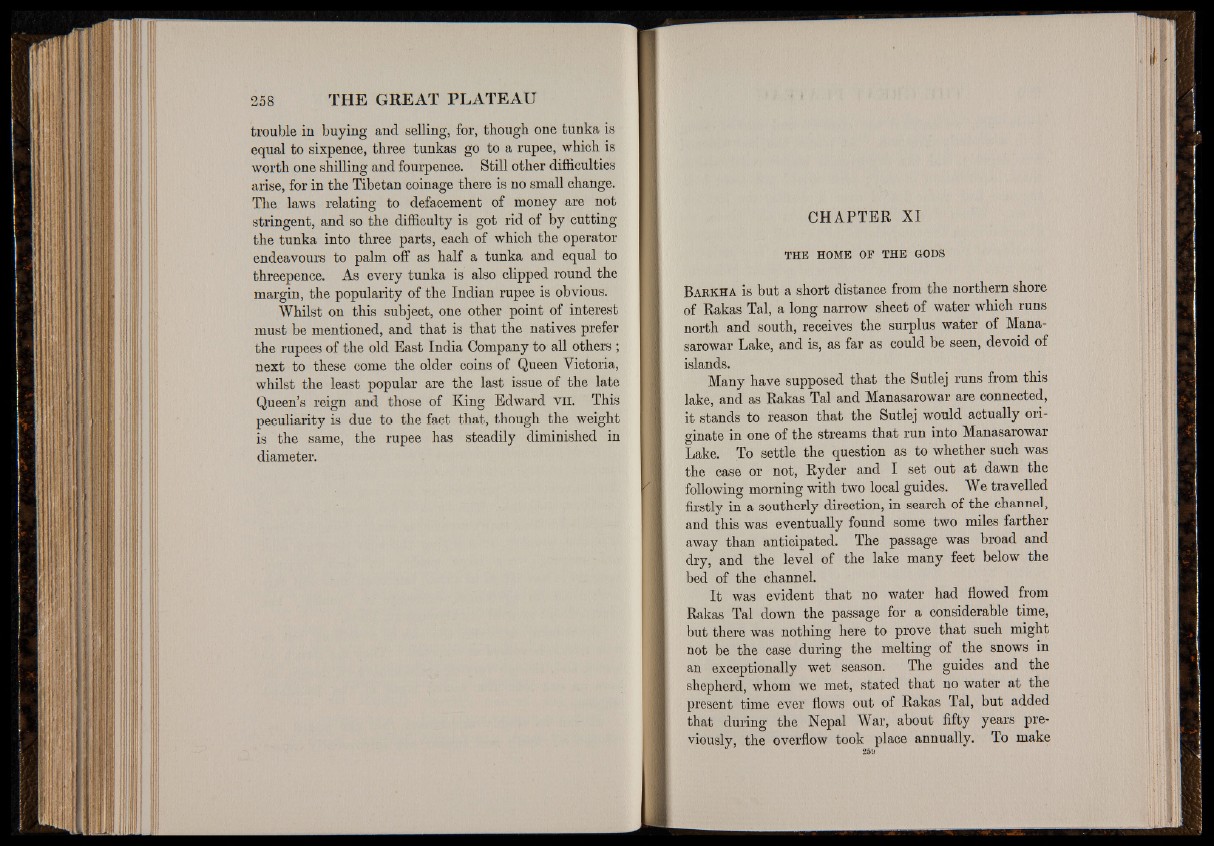
trouble in buying and selling, for, though one tunka is
equal to sixpence, three tunkas go to a rupee, which is
worth one shilling and fourpence. Still other difficulties
arise, for in the Tibetan coinage there is no small change.
The laws relating to defacement of money are not
stringent, and so the difficulty is got rid of by cutting
the tunka into three parts, each of which the operator
endeavours to palm off as half a tunka and equal to
threepence. As every tunka is also clipped round the
margin, the popularity of the Indian rupee is obvious.
Whilst on this subject, one other point of interest
must be mentioned, and that is that the natives prefer
the rupees of the old East India Company to all others ;
next to these come the older coins of Queen Victoria,
whilst the least popular are the last issue of the late
Queen’s reign and those of King Edward vn. This
peculiarity is due to the fact that, though the weight
is the same, the rupee has steadily diminished in
diameter.
CHAPTER XI
THE HOME OF THE GODS
B a k k h a is but a short distance from the northern shore
of Rakas Tal, a long narrow sheet of water which runs
north and south, receives the surplus water of Mana-
sarowar Lake, and is, as far as could be seen, devoid of
islands.
Many have supposed that the Sutlej runs from this
lake, and as Rakas Tal and Manasarowar are connected,
it stands to reason that the Sutlej would actually originate
in one of the streams that run into Manasarowar
Lake. To settle the question as to whether such was
the case or not, Ryder and I set out at dawn the
following morning with two local guides. We travelled
firstly in a southerly direction, in search of the channel,
and this was eventually found some two miles farther
away than anticipated. The passage was broad and
dry, and the level of the lake many feet below the
bed of the channel.
It was evident that no water had flowed from
Rakas Tal down the passage for a considerable time,
but there was nothing here to prove that such might
Hot be the case during the melting of the snows in
an exceptionally wet season. The guides and the
shepherd, whom we met, stated that no water at the
present time ever flows out of Rakas Tal, but added
that during the Nepal War, about fifty years previously,
the overflow took place annually. To make